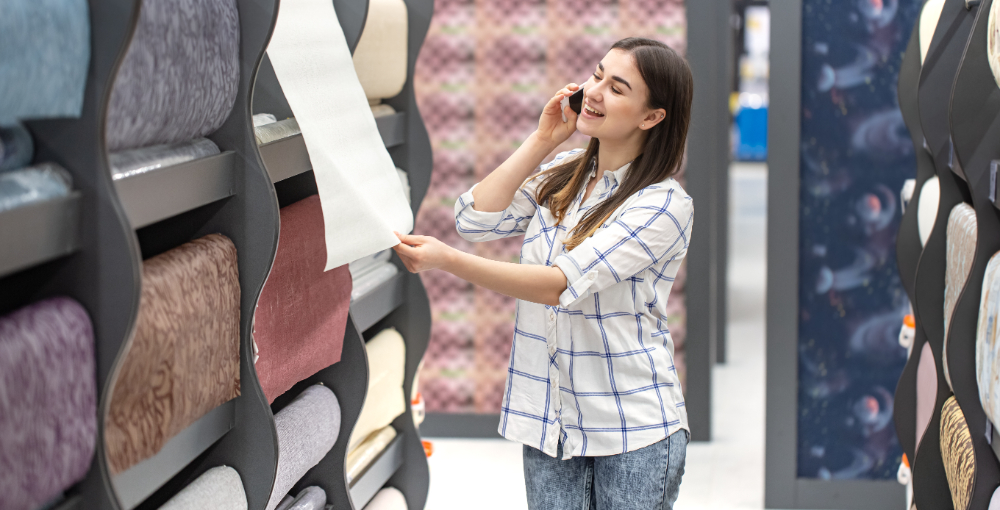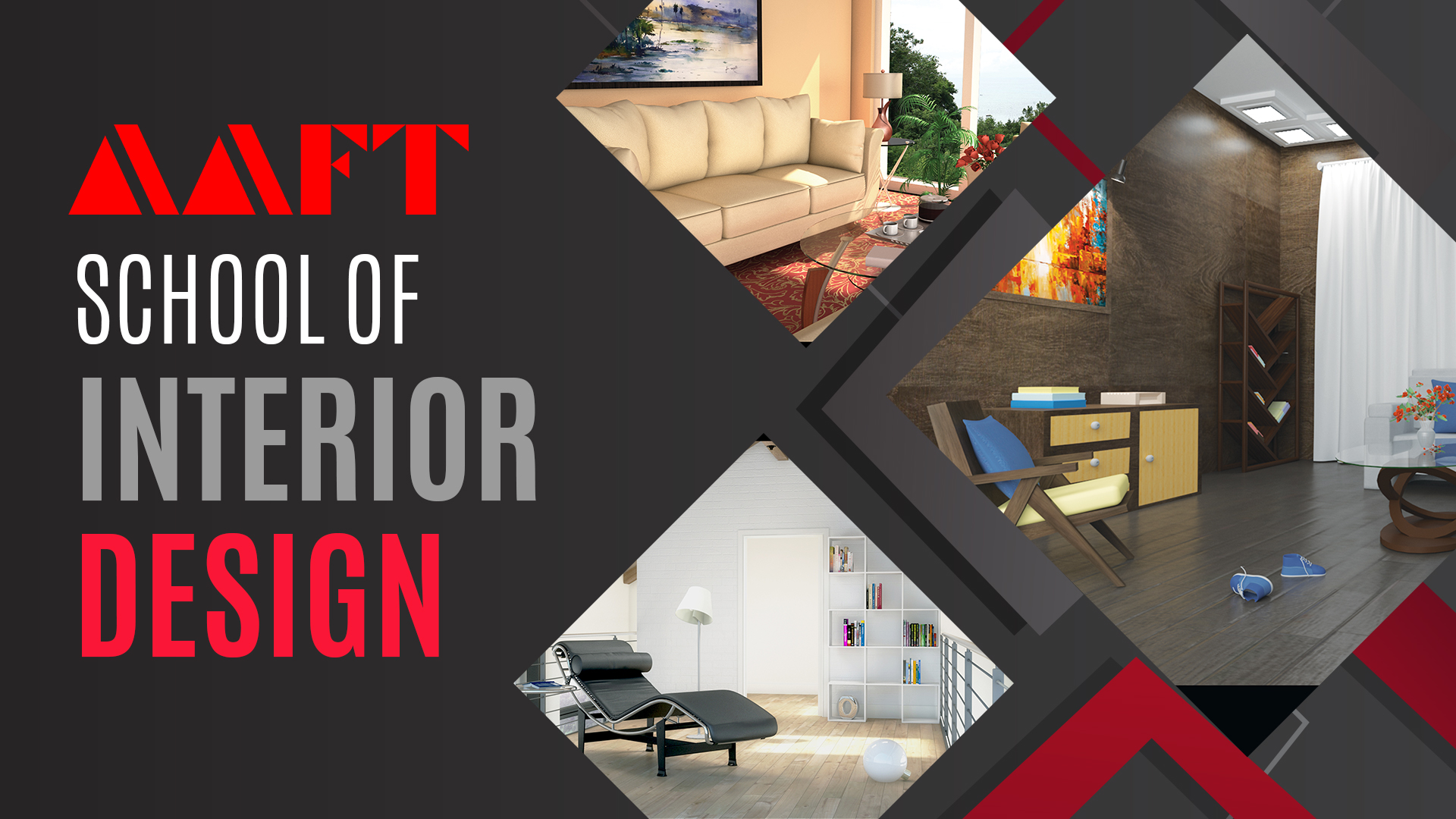The Power of Textures: How to Add Visual Interest to Any Room
Textures are to interiors what spices are to food – they add just the right kick to the aesthetics of a space without completely altering its character. A little textured decor, an accent wall, or some embroidered curtains can add depth and dimension to a room.
However, incorporating textures in interior design is not just about aesthetic appeal – textures encompass the visual and physical characteristics that breathe life into a room. They add a warm and welcoming vibe that ties everything together and makes a design look complete.
From patterned wallpapers, a hand-painted mural, and contrasting textures to layering, textured upholstery, cushions, curtains, and throw blankets with interesting weaves – you can experiment with textures in lots of ways to elevate a room. Just be careful of overdoing it and create a practical and balanced look and your design will be ready.
In this article, we will look at all the different ways you can unleash the power of textures and make a space stand out.
Types of Textures in Interior Design That You Must Know About
Do you want free career counseling?
Ignite Your Ambitions- Seize the Opportunity for a Free Career Counseling Session.
- 30+ Years in Education
- 250+ Faculties
- 30K+ Alumni Network
- 10th in World Ranking
- 1000+ Celebrity
- 120+ Countries Students Enrolled
There are different types of textures and a bunch of ways you can play around with them. Each of these textures has its own characteristics and adds value to a space in its unique way.
There are tangible or tactile textures – ones that are rough or smooth to touch – and textures that appear a certain way but are two-dimensional. Let us explore these varied textures and their qualities in this section.

Tactile Texture
Tactile textures have physical properties that you can feel when you touch them. These are 3D and vary in terms of both how they look and how they feel.
Book Now →
Think of the difference between a rough brick wall and a smooth glass wall or a leather sofa and a velvet one and how each of these would feel different when you touch the surface.
Read Also: Interior Design Courses: Your Gateway to a Thriving Career in Decorating
You can use tactile textures in interior design to define spaces and highlight their qualities – soft and smooth textures like fur, cotton, linen, and wool for a sense of warmth and rough and metallic textures for a bold addition.
Do you want free career counseling?
Ignite Your Ambitions- Seize the Opportunity for a Free Career Counseling Session.These textures can evoke the intended emotion while emphasizing the artisanship and adding a touch of authenticity and sophistication.
Visual Texture
Unlike tactile textures, visual textures are two-dimensional. They simulate the feel of tactile textures but are flat to the touch.
Imagine geometric patterns to create intrigue in your living room, a brick-wall effect in your kitchen, or vinyl stickers imitating wooden panels for the study room. These will make a visual impact and add depth and dimension to draw your eyes.
But, you can use visual textures in interior design projects in multiple ways. Surface finishes like matte and glossy can act as visual textures and bring focus to the character of a space. Similarly, creating contrast through stripes and checks, and setting the mood with different wallpapers are great examples of experimenting with these.
You can use visual textures to emphasize a certain decor, add printed cushions and curtains to break the monotony of a room or use lines, patterns, and wallpapers to add a sense of movement. The goal is to create visual balance, evoke emotions, and complement the functionality of a room.
7 Ways You Can Use Textures in Interior Design To Elevate A Space
If you are curious to explore the power of textures and how they can make a room go from, say, a 3 to a 10, you are almost there. We have shortlisted some key ways you can use both visual and tactile textures in your designs and give them a ‘wow’ factor –
- Use Contrast
Contrast is an element of design that helps move one’s eyes and create a sense of dimension. Remember, contrast doesn’t always have to be in terms of colors and vivid patterns – even if you are following a monochromatic theme, you can create contrast through textures.
Using contrasting textures can add depth to the interiors and break the monotony – think peppy colors for cushions, creating emphasis through a mural, intricate patterns on carpets, intriguing lamps, and decor, or a textured curtain.
Crocheted or velvety cushions to go with the flat surface of the sofa, vases and lampshades, wooden shelves, or even a terracotta planter can do wonders for a design.
You can think beyond furnishings and add plants and creepers to your room to complement the stiffness of the architecture with something organic and flowy as well.
- Layer Different Textures
Layering is a fun way of using textures in interior design. It creates a visual flow and adds warmth and comfort to a space.
Layered curtains allow you to control how much natural light enters and how it falls on different surfaces. Cushions, throw pillows and blankets, macrame sofa covers, and cozy rugs are some ways you can layer different textures.
You can also use layering to focus on personal aesthetics – add a touch of the client’s favorite color, a material that evokes nostalgia, vintage statement pieces, or simple handcrafted decor. Combine colors with different visual and tactile textures to make the layering more interesting.
- Textures as Accents
What if you want to draw attention to a particular nook in your living room? Using textures – a brick or wooden panel, a mirror wall, a mural, or just adding some creepers – can not just enhance the vibe of the room, but make it stand out with its distinct qualities.
Designers often follow a 60-30-10 rule when working with a color palette. The idea is to use 60% of your main or base color, 30% of a secondary color, and only 10% for an accent color.
Read Also: Understanding Colour Palettes in Interior Design
Now, instead of using just paint, you can think out of the box, and experiment with the accent – throw pillows & blankets, rugs, a vase in the corner, or a vintage cabinet – the 10% can transform the look, making all the difference.
- Use Lights to Highlight Textures
Rooms have a certain amount of natural light that plays an integral role in designing their interiors – it helps draw attention, create visual interest through shadow, and place plants in a functional and visually pleasing spot.
Placing light fixtures in a way that emphasizes an interesting texture or decor, creates a warm/cool effect, and using shadow-casting or pattern projection lamps can define the mood of a space, add a regal richness to it, and enhance its aesthetic qualities.
- Murals and Sculptured Wall
Murals and sculptured walls are perfect for adding that little personalized touch to a space. From unique artworks to fine, hand-crafted materials, custom designs, and more – these can make a room feel inviting and homely.
While 3D elements can induce shadow play, creating movement & intrigue, and adding character to the room, murals create an illusion of depth by combining different colors and shapes.
Murals and sculptured walls are also great for evoking certain moods – they act as the focal point, draw attention, guide the viewer’s eyes, and highlight the creative and peppy side of the people who use that room. They create a memorable persona of the space, adding an interesting element to the overall vibe.
- Decor to Emphasize a Specific Texture
Using the right texture in interior design is all about understanding the concept and reflecting it through different visual or tangible elements. For instance, if you are working with an earthy palette, you can use terra cotta tiles or decor, macrame, and crochet for furnishing, or locally sourced materials like wood, bamboo, or jute. Similarly, you can incorporate metallic finishes and brutalist furniture to complement a more industrial and formal look.
Read Also: Interior Designer vs. Architect: Understanding the Key Differences
Focusing on one material and getting inspired by its texture can also add charm to the space – think cotton, linen, or silk for fabrics and matte or glossy wall finishes based on that. Or, imagine more textured fabrics like fur and soft colors or flowy, curvy decors to match the same vibe.
Other than enhancing the custom charm, treating textures as the centerpiece or main element in your design can create a timeless aesthetic, elevating the space and making it appear unique – rich and luxurious or fun and bold.
- Textured Furnishings & Upholstery
Textured upholstery or furnishings can be helpful if you want to incorporate textures without any permanent change. It also works for places where you want a more subtle, sophisticated, and minimal approach.
Materials like linen for curtains can add a soft chic to a space. Similarly, the plush texture of velvets and furs can add glamor and drama. Macrame and crochet can induce nostalgia with their artisanal finishes and handcrafted details.
Each texture has its personality and story to tell. Layering these textures can bring out the dynamic qualities of a room, elevating its functionality and appeal. It can be a great tool for interior designers to emphasize the concept and theme they are working with.
Things to Keep in Mind While Working With Textures
- Focus on Practicality – While you are exploring designs with textures as a focal element, don’t forget the practical considerations. Some textures may fit right with the vibe of the space but can be difficult to maintain or way out of budget. Make sure you keep these in mind so the final product suits the aesthetic of your client without breaking the bank or adding to their chores.
Read Also: 10 Essential Skills You Gain from an Interior Design Course
- Create a Balanced Look – Balance is one of the key elements of design. The right amount of texture will perfectly complement the mood of the space, add elegance to it, and create a visual appeal. Remember to layer, add a little drama, and emphasize the important elements.
- Mix Trends and Classics – While understanding trends and incorporating them in your design is super important, the concepts you are working on might not always align with everything trendy. Use a perfect blend of classics & trendy and traditional & new for a space that looks timeless and luxurious.
- Ensure Longevity – The quality of the materials has a great impact on your designs. Although it’s important to stay on budget, as a designer, it’s your responsibility to work around the finances and use long-lasting materials. It will both add value to the design and enhance your credibility as an interior designer.
Read Also: Interior Design Courses to Unlock Your Potential in the Design Industry
Using natural lights to enhance textures, placing lights in a way that draws attention to a textured wall or a decor, or using visual textures for an illusion of movement can really elevate a room.
If you love the aesthetic appeal textures bring and want to explore other elements and principles of design, an interior design course could be just what you’re looking for. Check out the degree and diploma programs offered by AAFT Noida to expand your knowledge, refine your skills, and kickstart your career in the industry.
Conclusion
Exploring different textures in interior design can be a game changer. Textures are powerful – they can make a room go from boring to bold and from dull to full of life.
You can layer different textures to add dimensions, add murals and textured accent walls for a sense of depth, and play around with contrast. Textured cushions, curtains, throw blankets, patterned carpets, and velvety or furry rugs can emphasize the design concept and the space’s mood.

AAFT has been providing the world with limitless creativity and expression since 1993! Through a dynamic and industry-driven curriculum, AAFT provides engaging and captivating articles to persuasive blogs and empowers its readers to explore diverse avenues of creative media education-related content.










